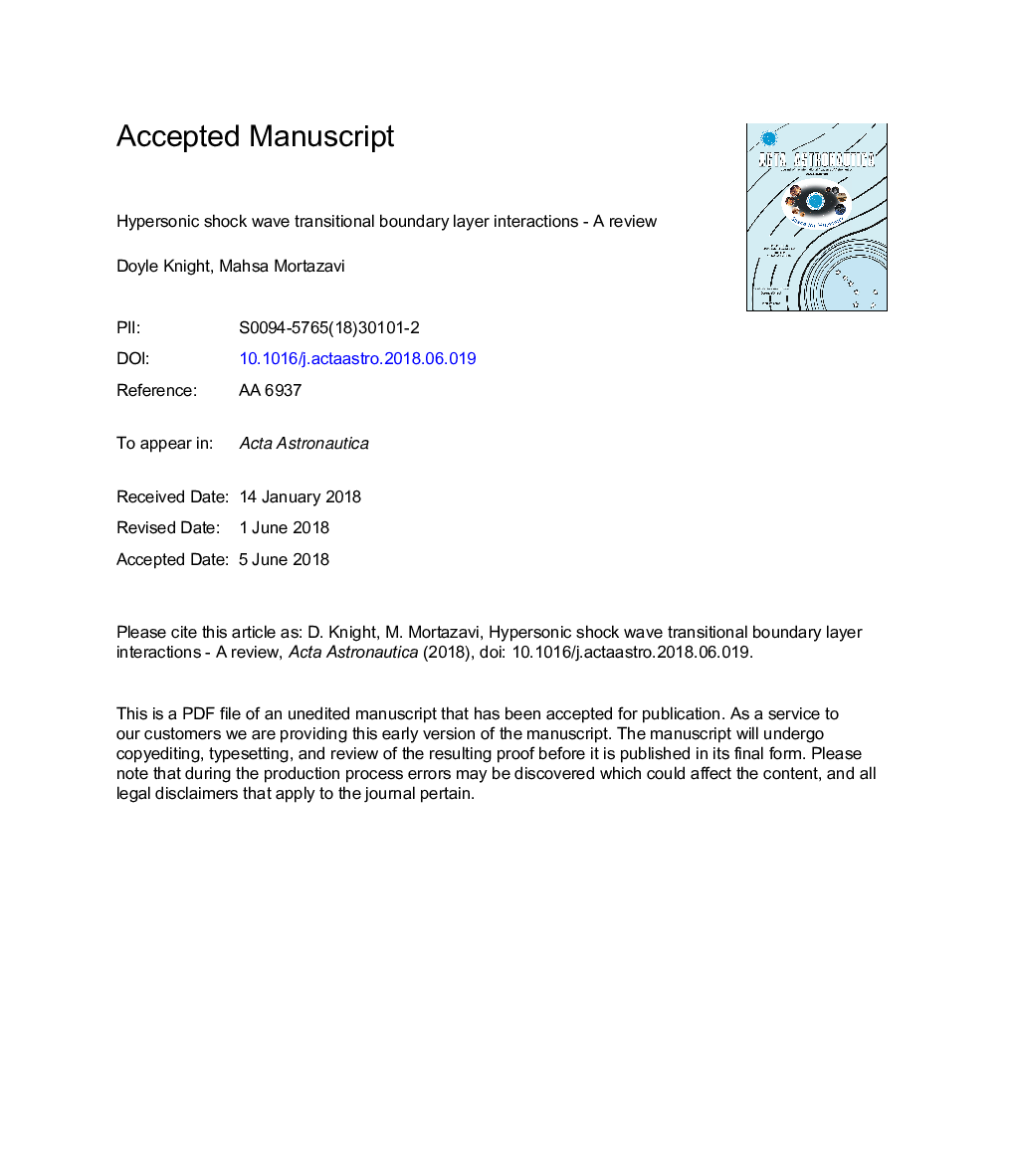| Article ID | Journal | Published Year | Pages | File Type |
|---|---|---|---|---|
| 8055405 | Acta Astronautica | 2018 | 70 Pages |
Abstract
Hypersonic shock wave transitional boundary layer interactions can result in significantly greater peak surface heat transfer than laminar or turbulent interactions. Consequently, the understanding of the flowfield structure of hypersonic shock wave transitional boundary layer interactions is important. Moreover, the capability to predict the mean and fluctuating aerothermodynamic loading due to such interactions is needed for effective design of hypersonic vehicles. A review of hypersonic shock wave transitional boundary layer interaction research since 1993 is presented. Significant progress has been achieved in the understanding of the flowfield structure. The most promising prediction methodology is Direct Numerical Simulation (DNS); however, DNS requires dynamic (i.e., time varying) inflow boundary conditions for five flow variables (i.e., three components of velocity, and two thermodynamic variables), and such experimental data is presently infeasible. Additional research is needed to understand the effect of assumed dynamic inflow boundary conditions on DNS prediction of aerothermodynamic loads.
Keywords
Related Topics
Physical Sciences and Engineering
Engineering
Aerospace Engineering
Authors
Doyle Knight, Mahsa Mortazavi,
